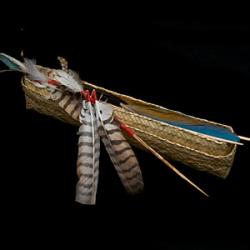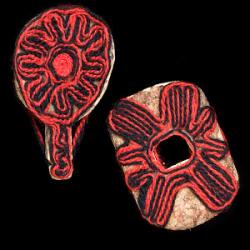The temps may still be low, but there’s already much to look forward to this summer! With record snowfalls come record wildflower blooms, so be sure and bring our camera.
New Mexico Ski Resorts Make Summer Shine With Events, Activities – OnTheSnow.
New Mexico Land for Sale - Southwest Properties, Inc. - David Wolfswinkel Broker, AZ,
Hitching Post Land Company - David Wolfswinkel, Qualifying Broker. Lic#: 14470 - NM
The temps may still be low, but there’s already much to look forward to this summer! With record snowfalls come record wildflower blooms, so be sure and bring our camera.
New Mexico Ski Resorts Make Summer Shine With Events, Activities – OnTheSnow.
For the first time, the Museum of Indian Arts and Culture/Laboratory of Anthropology presents a significant collection of Huichol art from the early part of the last century in Huichol Art and Culture: Balancing the World. The exhibition opens at the Museum of Indian Arts and Culture April 11, 2010 and will run through March 6, 2011.
There are important ties between Huichol work and Native American, prehispanic, and Hispanic art histories and cultures. Known today for colorful, decorative yarn paintings, the origins of modern Huichol art are found in the earlier Huichol religious arts of the Robert M. Zingg ethnographic collection at the Museum of Indian Arts and Culture.
Huichol Art and Culture: Balancing the World focuses on the Huichol, a Native American people of western Mexico who for many centuries have retained their unique culture and prehispanic religious beliefs. Their remote location in the rugged Sierra Madre Occidental mountains primarily in the states of Jalisco and Nayarit has allowed for greater resistance than any other indigenous group to the forces of Christianization and acculturation. The Huichol people today continue to create traditional art and practice ancient rituals that predate the time of Spanish contact.
From 1934-1935, Dr. Robert Mowry Zingg (1900–1957) was the first American anthropologist to conduct extended ethnographic fieldwork among the Huichol in the community of Tuxpan de Bolaños. Zingg lived with Huichol families and participated in everyday life, while studying their mythology and ceremonialism. Huichol Art and Culture: Balancing the World presents the collection of Huichol artifacts which Zingg collected on behalf of the Laboratory of Anthropology during the earliest years of its history as an institution.
In the past and today, Huichol art is made to communicate with a pantheon of ancestors and gods. When Zingg arrived in Tuxpan, he found that most Huichol adults were occupied with making art. As he observed, the Huichol constantly create offerings which serve as visual prayers to the gods. As part of the ceremonial cycle, the Huichol make pilgrimages to leave offerings at sacred sites.
Ceremonial offerings to the gods are the precursors to the art of modern Huichol yarn painting. Early Huichol votive art evolved into art produced for sale beginning in the 1950s, when artists adapted traditional techniques, designs, and materials to “paint†in yarn. Sophisticated and vibrant Huichol yarn paintings have now become renowned in the global art market.
Among the highlights of the Zingg collection are outstanding examples of ancient, symbolic textile designs that were intricately woven on backstrap looms by Huichol women. The collection features prayer arrows, richly decorated votive gourd bowls, and other offerings for the gods. Oversized shamans’ chairs and diminutive gods’ chairs are unique to Huichol ceremonies. Colorful macaw feathers, beaded jewelry, deerskin quivers, embroidered clothing, and hats adorned with feathers, squirrel tails, and ribbons all attest to a time and a culture where art objects were made for everyday and ceremonial use, not tourist consumption.
The concept of balance is central to Huichol art and culture. The balancing of opposites, such as the wet and dry seasons, or darkness and light, is a prevalent theme in Huichol art. Huichol ceremonies are performed and offerings are made to keep the world in balance, ensuring successful crops and hunting, fertility, and health. Today, the Huichol say that they continue to make art and perform the centuries-old rituals not just for their own people, but for the benefit of everyone in the world.
The concept of balancing opposites, so central to Huichol culture, is also basic to the Pueblo worldview and is seen in Pueblo architecture, government, and ceremony. A further connection to Pueblo culture can be found in the Uto-Aztecan language of the Huichol. It is related to the language of the ancient Aztecs of central Mexico, to the Cora, to the Tohono O’odham and Hopi of Arizona, and to the Tanoan languages of the Northern Rio Grande region of New Mexico.
Zingg, who spent his youth in northern New Mexico, noted a similarity in “the richness of the ceremonial life of both the Huichols and the Pueblos.†He and other scholars have drawn parallels between the two cultures, including the importance of the cardinal directions and elaborate religious symbolism in art and decoration involving the deer, fire, rain, corn, and concepts of growth and fertility.


Spring is a great time to enjoy skiing in New Mexico, longer warm days with great snow and affordable skiing. Spring breakers and everyone else are going to be able to take advantages lots of extensions to New Mexico skiing this Spring. Now is the time to plan your spring “winter” get a-way. “Come let our family take care of your family”
Several other resorts are considering extending their seasons.
Vadito, NM: On pace for yet another record-breaking season, Sipapu Ski and Summer Resort, New Mexico’s year-round destination for family-friendly, family fun, announced it will expand its lift operating hours beginning March 14 through the end of the season. From March 14-21 and again March 27-28, lifts will be open from 9 a.m. until 5 p.m., giving snow enthusiasts an extra hour every afternoon on the slopes.
Sipapu will continue to offer expanded afternoon hours through the rest of the season: from March 22-26 and April 3 until closing day (scheduled for April 11), lift operations will go from 9:30 a.m. until 4:30 p.m. The full-service rental shop and ticket office will open at 8:30 a.m. on March 14-21 and March 27-28; the rental shop and ticket office will resume their normal 8 a.m. opening time March 22-26 and April 3 until closing day.
Sipapu is scheduled to again be the last resort to close in New Mexico, with closing date set for April 11 weather and conditions permitting – visitors are encouraged to check SipapuNM.com for the latest updates.
WASHINGTON — There are currently 23 American Recovery & Reinvestment Act (ARRA)-financed highway construction projects underway or completed in New Mexico involving $160.2 million in funds, according to data released today by the Washington, D.C.-based American Road & Transportation Builders Association (ARTBA). The projects underway or completed have supported or are supporting 4,457 jobs in New Mexico that would otherwise not exist, says ARTBA Vice President of Economics & Research Dr. Bill Buechner.
ARRA, signed into law on February 17, 2009, provided $48 billion for transportation improvements over two years, including $27.5 billion for highway, bridge and related construction projects nationwide. The law is having significant impacts on the transportation construction industry in all 50 states.
ARRA provided $252.6 million to New Mexico for highway, bridge and related improvements. This one-time bonus added more than 81 percent to New Mexico’s regular federal highway funds under the current federal surface transportation law — Safe, Accountable, Flexible, Efficient Transportation Equity Act: A Legacy for Users (SAFETEA-LU) — bringing the state’s total federal highway funding in 2009 to a record $562.8 million.
According to Buechner, a Harvard-trained economist, another 67 projects have been identified and are slated to be under construction shortly.
The following shows the number of ARRA-financed highway projects and amount obligated in each New Mexico congressional district.
Congressional District Number of projects Amount Obligated
---------------------- ------------------ ----------------
1 10 $33,340,343
--- --- -----------
2 42 $69,326,633
--- --- -----------
3 38 $146,608,216
--- --- ------------
A full report can be obtained by contacting ARTBA’s Jeff Solsby at jsolsby@artba.org or 202-289-4434.
For 108 years, ARTBA has represented the U.S. transportation design and construction industry before Congress, the White House, federal agencies, news media and general public.